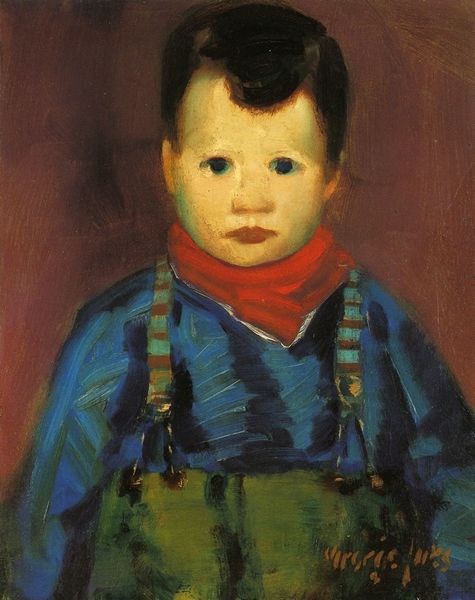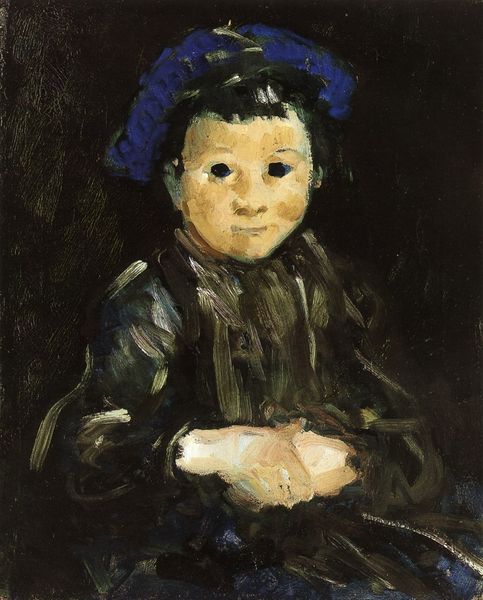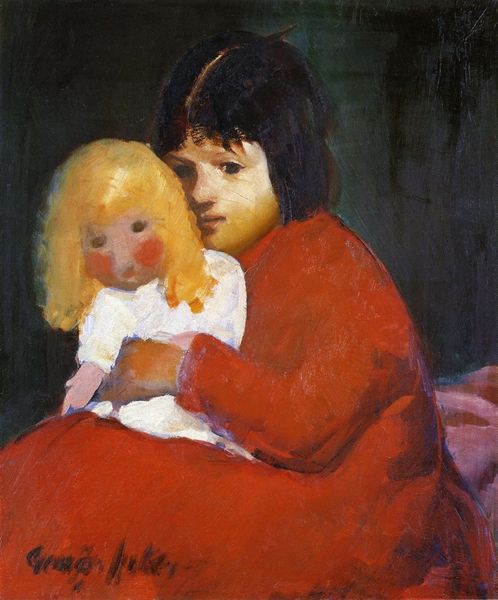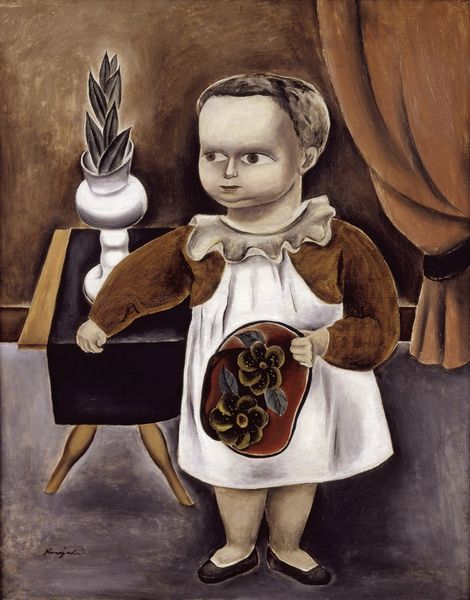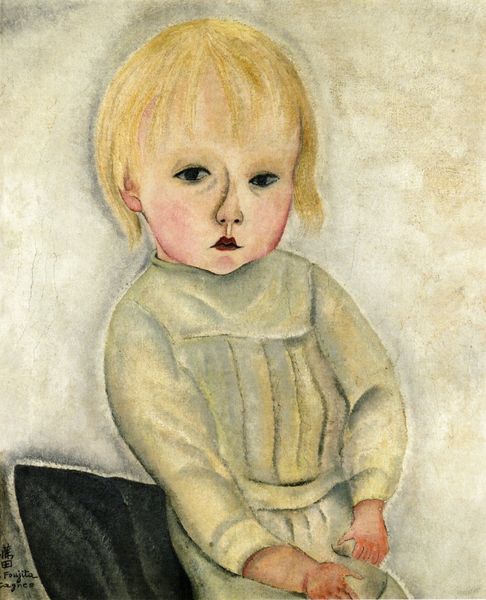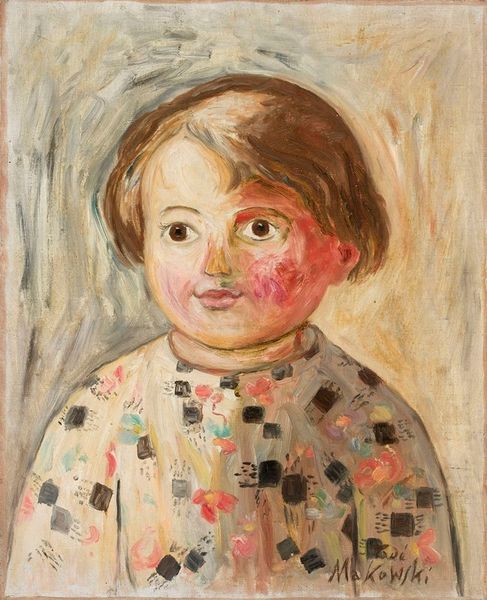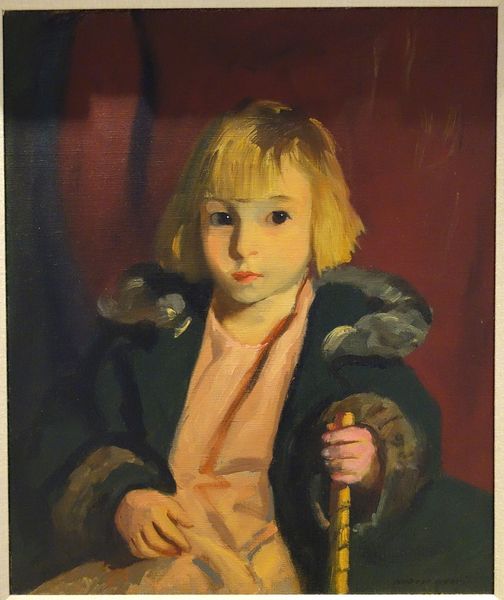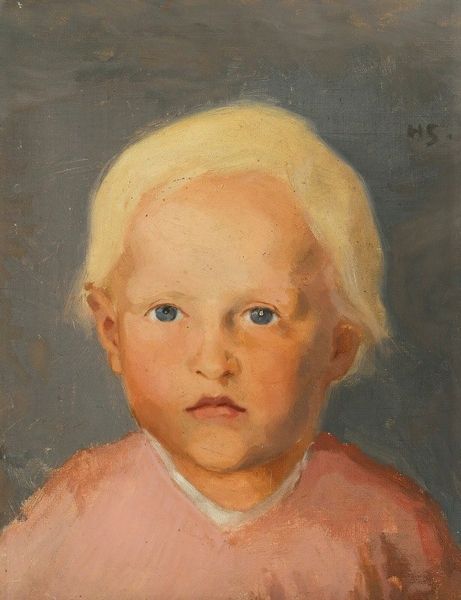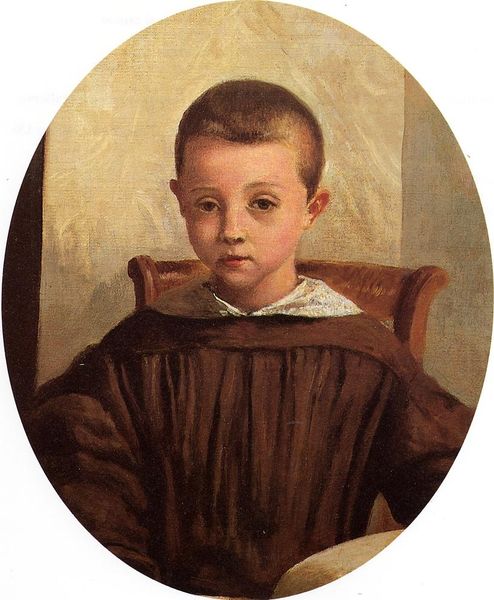
Dimensions: 63 x 81 cm
Copyright: Public domain
Curator: Welcome. Before us, we have Albin Egger-Lienz’s, “The Artist's Daughter Ila,” created in 1895. It’s quite a striking oil painting. Editor: My first impression is one of both stillness and discomfort. There's a rigidity in her pose, the harsh lighting and plain background lend a slightly unsettling feeling to the piece. Curator: Precisely. Egger-Lienz was working during a period grappling with realism, infused with a romantic spirit that explored the social and political dimensions of everyday life. The decision to present his daughter in such a manner seems deliberate, placing childhood within the frame of broader societal structures. Editor: I’m curious about the symbol of childhood itself. Children have, throughout history, represented purity, innocence, but here… it feels like something is different. The little girl is on a simple chair, and that can stand for stability or foundation but is also strikingly simple in comparison to other objects available at the time of its creation. Curator: It’s fascinating how the impasto technique emphasizes certain features—her face, her hands, and her simple clothes. One might consider the commentary here about class, where even the artist's own child is painted with stark and unidealized imagery of lower societal positioning. She is wearing dark stockings and practical shoes as much as she is wearing simple and humble clothing overall. Editor: This directness lends to it an incredibly psychological dimension. Her large eyes are quite pronounced in comparison with her unsmiling lips; they seem to hint at awareness or maybe even anxiety. The high vantage point and frontal position create almost confrontational energy between the observer and subject. Curator: And the cultural context must also be considered. During the late 19th century, depictions of childhood began to shift under the influence of evolving pedagogical and psychological theories. How children were viewed and raised transformed in these times. Editor: These visual signifiers highlight deeper layers in how we approach historical portraiture, particularly when childhood, a universal motif, is made specific and, perhaps, even unsettling, which leads us to confront deeper historical changes. Curator: A potent consideration in assessing the intersection between family life and broader society in late nineteenth century painting, in order to better discuss gender, youth and class. Thank you for your thoughtful perspectives. Editor: It allows one to see through different perspectives how even seemingly basic portraiture possesses profound, lasting imagery with considerable social significance. Thank you.
Comments
No comments
Be the first to comment and join the conversation on the ultimate creative platform.

